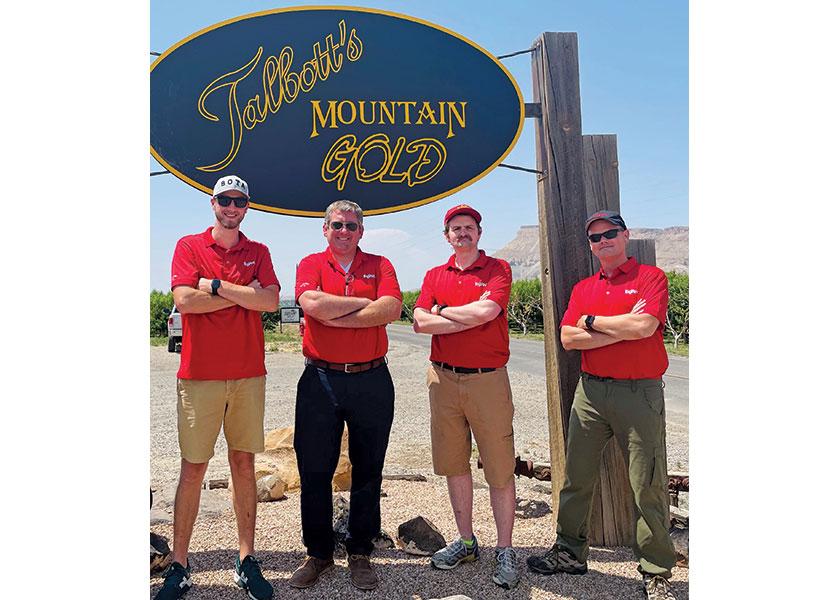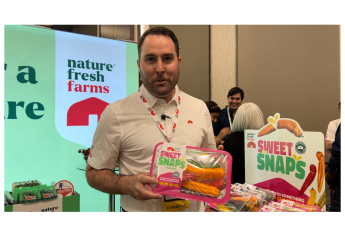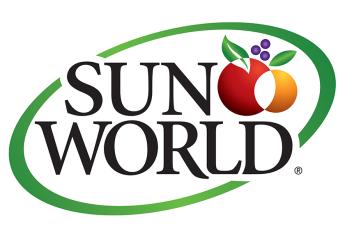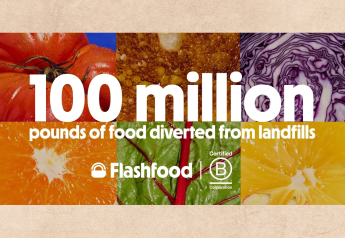Produce partners are critical to success

Strong retail relationships are the bedrock of Hy-Vee’s produce department. “We try to keep the same partners year after year and invest in them. We have been partners with some of our growers for decades. And we maintain those relationships,” says Jeff Mallory, vice president of produce.
From basic beets to specialized varieties of citrus, Hy-Vee is cultivating strong partnerships with growers to provide its customers with the highest-quality products supported by the most engaging merchandising and marketing.
Hy-Vee has a reputation for working hand in hand with vendors on in-store programs. “There’s always somebody that is growing something unique, like a different variety of tomato. They might only have 1,000 cases, and we’ll do everything we can to buy that product and put it in our stores. Growers want to work with Hy-Vee because we put their name on the display. Our marketing team will come and take their picture and create signage,” says Mallory.
Read related: Produce is star performer at Hy-Vee
“We have a grower of pixie tangerines from the Ohio Valley in California who has such a cool story. It’s an amazing piece of citrus that is only available mid-March through mid-April because of the way the sun lines up for a specific number of hours of the day in this particular valley in California. Obviously, we want sales, but we also want the customer to be able to have part of this amazing experience,” says Mallory.
For pixie tangerines, Hy-Vee created signage complete with QR codes to highlight the uniqueness of the product. The grower partner visits Des Moines, Iowa, stores every year for demos and sampling. “When you’ve got the farmer standing in the middle of the store with beautiful signage on top of a beautiful display of bright orange citrus and he gets to tell the story about how many acres he has and how long he’s been farming it and the characteristics of this product, it doesn’t get more specific than that,” says Mallory.
Tina Potthoff, senior vice president of communications, says the storytelling events are important to educating customers. Hy-Vee’s social media platforms enable the chain to amplify the events for maximum exposure. “Professional demo companies are great, but they are nowhere near as authentic and they don’t resonate with the customer in quite the same way,” says Mallory.
Read related: Retail spotlight on Hy-Vee
Partnerships with local growers are more important than ever before for Hy-Vee. “Local is extremely important to us. For some customers, it’s about supporting small business, for some it’s about the carbon footprint. Others are interested in the freshness and quality. We are absolutely reaching that customer who wants to buy as hyperlocal as they can,” says Mallory.
“People want to support local, especially after COVID. A huge focus for Hy-Vee is how we can allow customers to support local through us. People may not have time on Saturdays to go to the farmers market, but they support local through their Hy-Vee,” says Potthoff.
Hy-Vee’s commitment to local growers runs deep. “We partner with the best growers we can find. When we’re selling their product, we pay them right away and that helps them grow faster. We do everything we can to sell their product so they can expand their operation,” says Mallory.
Read related: What Hy-Vee has learned from COVID
Mallory notes the relationship the chain formed with a grower of musk melons in Des Moines. The chain committed to buying everything the farmer produced and wanted to tell his story. Hy-Vee visited the farm, took pictures, filmed video and even provided their own workers to help pick from the fields. The company also provided staff to pick peaches at a grower’s farm in Illinois.
This past November, Hy-Vee hosted its fourth Best of Local Brands summit, an opportunity for small businesses to showcase their products to Hy-Vee buyers.
Read related: How Hy-Vee tailored Aisles Online to match shopper preferences during the pandemic
“We know our customers are increasingly interested in purchasing from local suppliers, and our Best of Local Brands summits enable us to expand and enhance the product offerings from small and minority-owned businesses at all Hy-Vee stores throughout our eight-state region,” Potthoff said.







